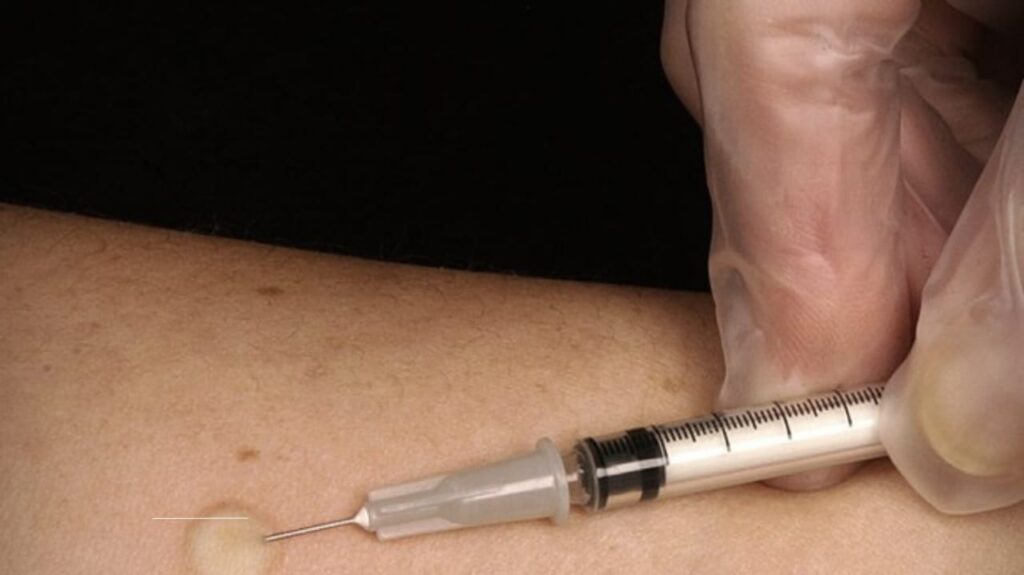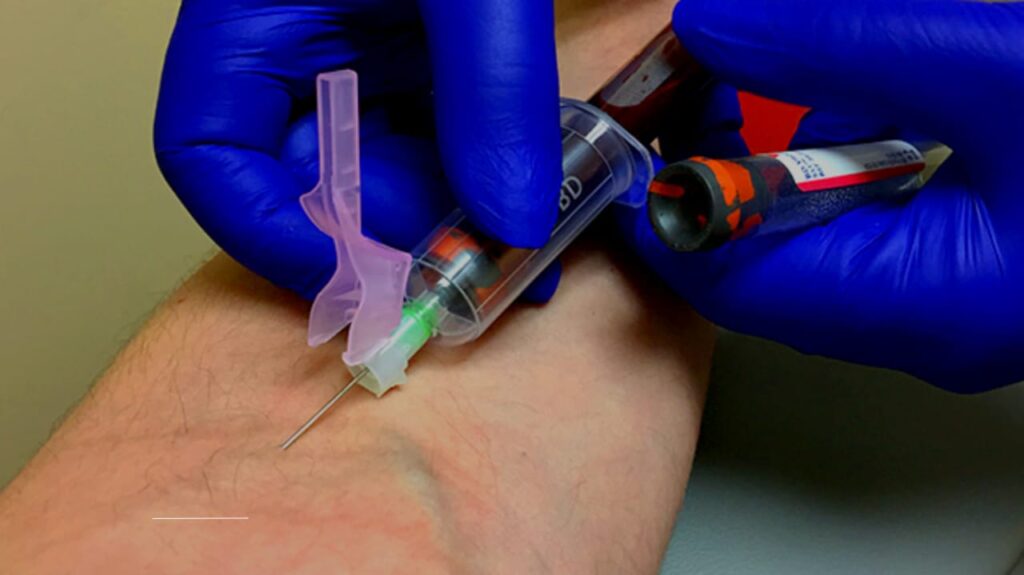Understanding Tuberculosis (TB) and the Need for Testing
Tuberculosis (TB) is a bacterial infection caused by Mycobacterium tuberculosis, primarily affecting the lungs but capable of spreading to other organs. According to the World Health Organization (WHO), over 10 million people worldwide contracted TB in 2022, with 1.3 million deaths. Early detection is critical—not only to treat active TB but also to identify latent infections before they become contagious.
Testing for TB is a cornerstone of public health strategies. Two main methods dominate: the tuberculin skin test (TST) and the interferon-gamma release assay (IGRA), a blood test. Both aim to detect immune responses signaling TB exposure, but they differ in procedure, accuracy, and practicality. Let’s dive into how each works and when they’re most useful.
The Tuberculin Skin Test (TST): A Century-Old Method

How It Works
The TST, or Mantoux test, has been used since the 1890s. A healthcare provider injects a small amount of purified protein derivative (PPD), a sterile extract of TB bacteria, under the skin of your forearm. This isn’t a live vaccine—it’s designed to trigger an immune reaction if your body has encountered TB before.
After 48–72 hours, you’ll return to have the injection site examined. A raised, firm bump (induration) of a certain size (usually ≥5–15 mm, depending on risk factors) indicates a positive result.
Pros of the Skin Test
- Low Cost: At 10–50 per test, it’s affordable for large-scale screenings.
- Widespread Availability: Used globally, even in resource-limited settings.
- No Lab Required: The initial step doesn’t need specialized equipment.
Cons of the Skin Test
- Two Visits Required: Missing the 48–72-hour reading window invalidates the test.
- False Positives: Common in people vaccinated with Bacillus Calmette-Guérin (BCG) or exposed to non-TB mycobacteria.
- Subjectivity: Measuring the bump’s size can lead to human error.
Who Should Consider It?
The CDC recommends the TST for:
- Children under 5 (blood tests are less validated in this group).
- Populations where IGRA isn’t accessible.
- Those needing routine screenings (e.g., healthcare workers).
The Blood Test (IGRA): A Modern Alternative

Photo Credit: Getty Image
How It Works
The IGRA detects TB exposure by measuring interferon-gamma, a protein released by white blood cells when exposed to TB antigens. Common versions include the QuantiFERON-TB Gold Plus and T-SPOT.TB.
A blood sample is drawn and sent to a lab. Results typically return in 24–48 hours. No follow-up visit is needed.
Pros of the Blood Test
- Higher Specificity: Unaffected by BCG vaccination, reducing false positives.
- One Visit Only: Convenient for busy individuals.
- Objective Results: Lab analysis minimizes human error.
Cons of the Blood Test
- Higher Cost: Ranges from 50–200, depending on location.
- Lab Dependency: Not ideal in areas without advanced facilities.
- Limited Use in Children: Less data on accuracy for kids under 2.
Who Should Consider It?
The IGRA is preferred for:
- BCG-vaccinated individuals (common outside the U.S.).
- Those unlikely to return for a second appointment.
- People with prior false-positive skin tests.
Skin Test vs. Blood Test: Key Comparisons
1. Accuracy and Reliability
- False Positives: The skin test’s biggest flaw. For example, a 2020 study in Clinical Infectious Diseases found IGRA specificity at 98% vs. 88% for TST in BCG-vaccinated groups.
- False Negatives: Both tests may miss infections in immunocompromised individuals (e.g., HIV patients).
2. Practical Considerations
- Speed: IGRA provides faster results (1–2 days vs. 2–3 days plus a second visit for TST).
- Cost: TST is cheaper, but IGRA’s accuracy may save money long-term by avoiding unnecessary treatments.
3. Accessibility
In rural India or sub-Saharan Africa, TST dominates due to minimal infrastructure. Conversely, U.S. clinics increasingly favor IGRA for its precision.
4. Patient Comfort
Needle-phobic patients might prefer the one-time blood draw over two skin test visits.
Case Studies and Real-World Scenarios
Case 1: The Healthcare Worker
Maria, a nurse in Texas, requires annual TB screening. Her clinic uses IGRA to avoid the hassle of return visits. Since she received BCG as a child, IGRA’s specificity ensures she isn’t wrongly diagnosed.
Case 2: Refugee Screening
Aid groups testing refugees in crowded camps rely on TST for its low cost and portability. Follow-up exams with chest X-rays confirm active TB in positive cases.
Case 3: Pediatric Dilemma
A 4-year-old with a TB-exposed relative gets a skin test, as IGRAs aren’t well-validated for young children.
Expert Insights: What Do Doctors Say?
Dr. Angela Martinez, an infectious disease specialist, notes: “IGRA has revolutionized TB testing for adults, especially in BCG-vaccinated populations. But we still need the skin test for kids and areas without labs.”
The WHO’s 2023 guidelines stress that neither test is perfect. “A negative result doesn’t rule out TB,” warns Dr. Raj Patel, a WHO advisor. “Clinical judgment and additional tests are always needed.”
Who Should Get Tested?
Testing is crucial for:
- Close contacts of active TB patients.
- Immigrants from high-TB-incidence countries.
- Healthcare workers.
- People with HIV or other immune-weakening conditions.
The CDC recommends testing latent TB in high-risk groups to prevent progression to active disease, which has a 5–10% lifetime risk without treatment.
Navigating Test Results
A positive skin or blood test means you’ve been infected with TB bacteria—not that you have active TB. Further steps include:
- Chest X-ray to check for lung damage.
- Sputum tests if active TB is suspected.
- Treatment for latent TB (e.g., isoniazid) to prevent progression.
Final Considerations
Choosing between a skin test and blood test depends on your circumstances. Cost, availability, medical history, and even your schedule play roles. Always consult a healthcare provider to determine the best approach for you. By understanding the strengths and limits of each test, you’re better equipped to make informed decisions about your health.
